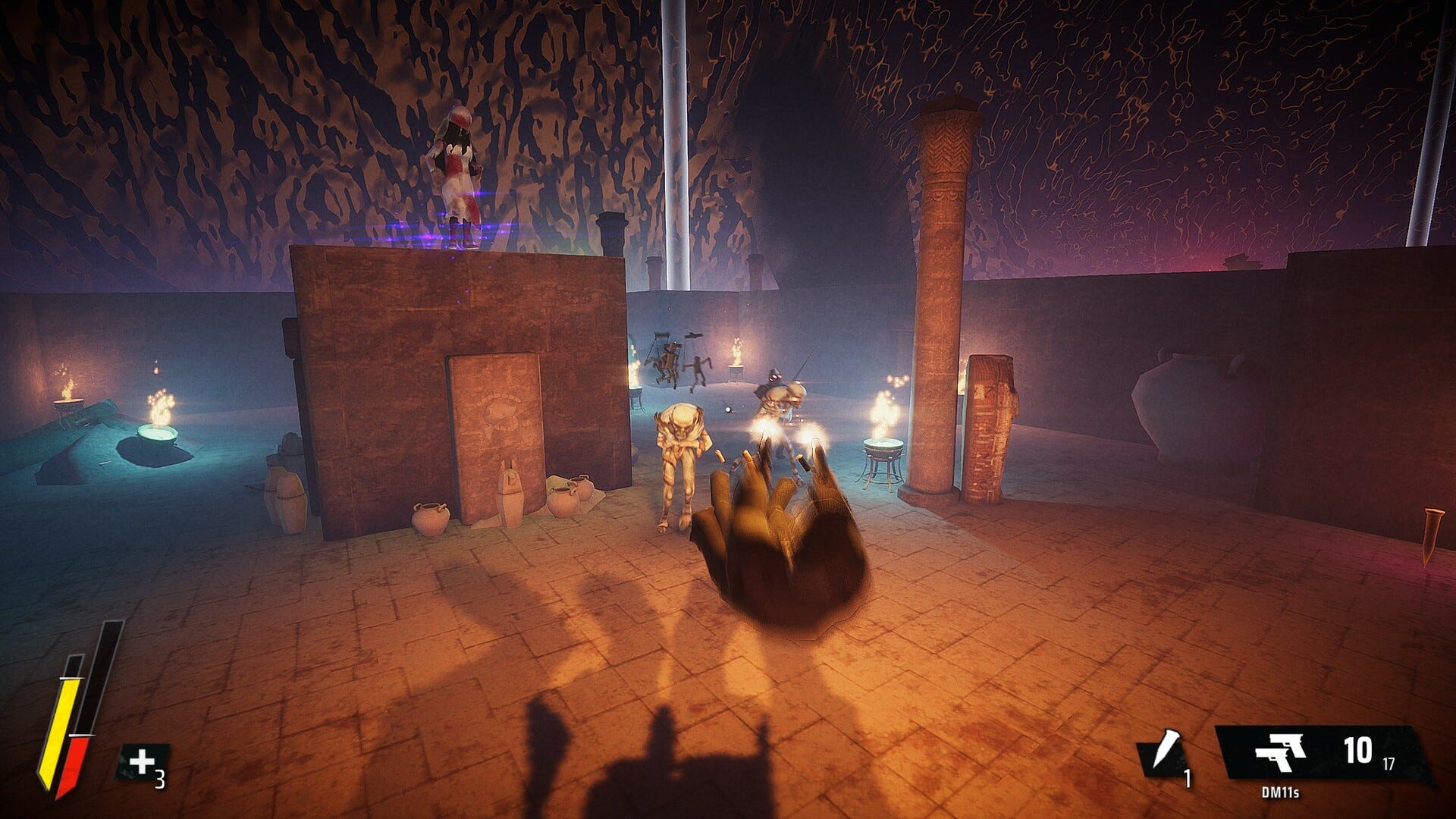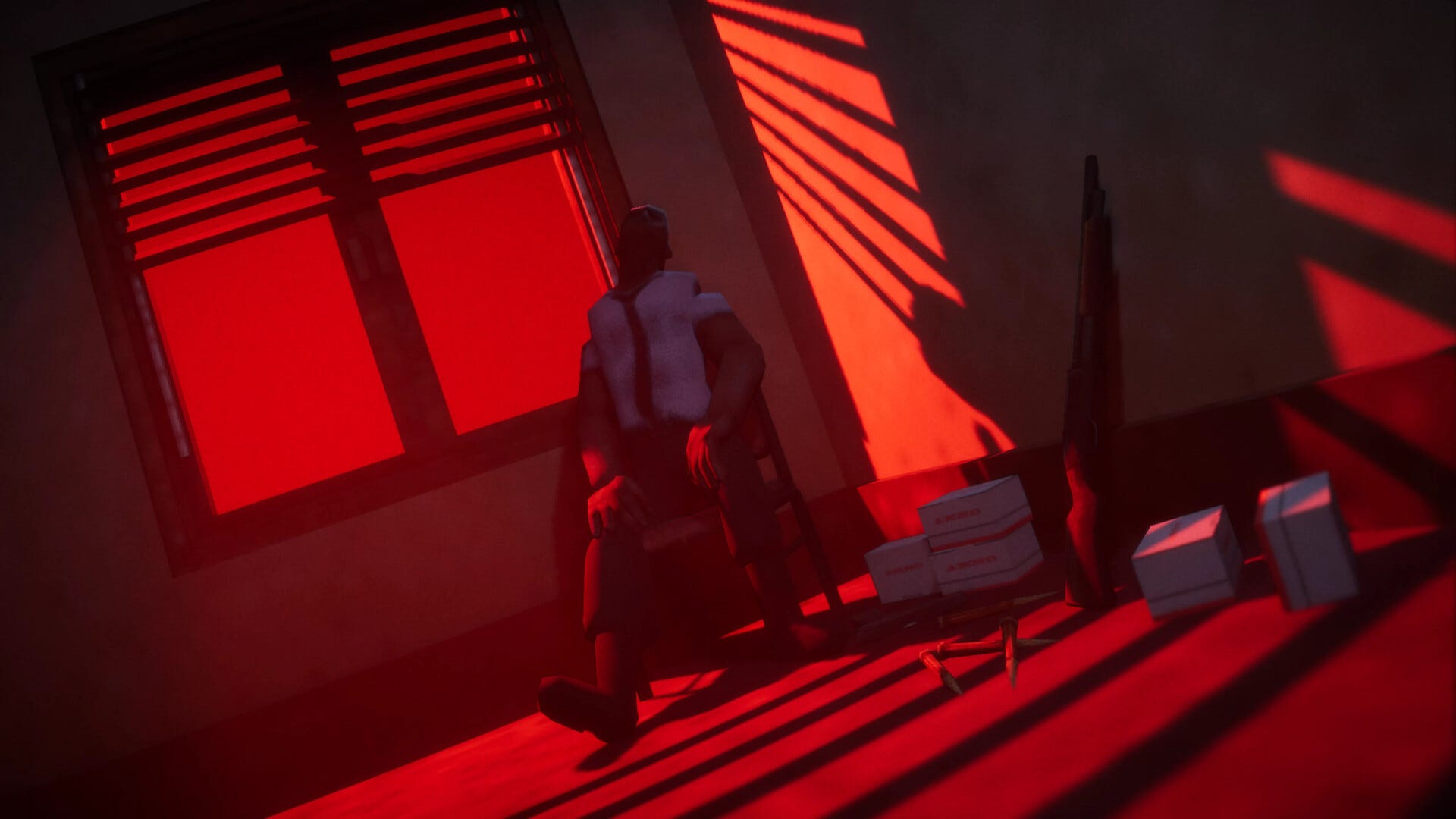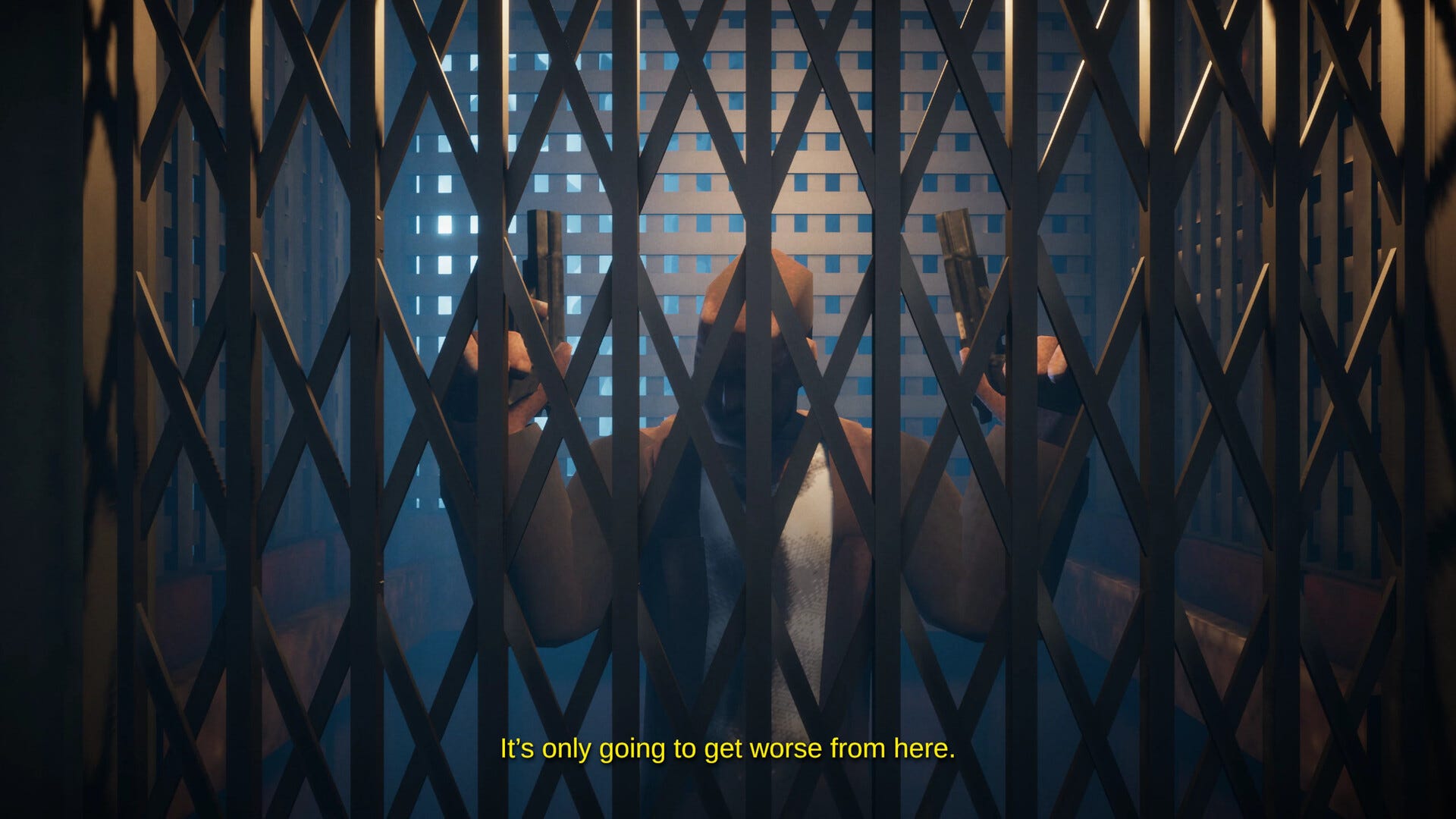Trending
Opinion: How will Project 2025 impact game developers?
The Heritage Foundation's manifesto for the possible next administration could do great harm to many, including large portions of the game development community.
What made the cut, what didn't, and how a one-year delay somehow didn't expand the scope of a thrilling, Max Payne-like ride.

In 2021, Strange Scaffold director Xalavier Nelson, Jr. began promoting his next upcoming video game El Paso, Elsewhere with two clear goals: it would bring back the third-person action mechanics that made 2001’s Max Payne a smash hit, and it would ship by the end of 2022.
Only one of those things came true. But nine months after his original, self-imposed deadline, Nelson couldn’t be more pleased with the results.
“Over the course of development, so many of the team members exhibited skillsets, perspective, and abilities that were not apparent at the beginning of our journey—without necessarily increasing scope, even,” Nelson told Game Developer on the eve of the game’s September 26 launch on PC. “The picture of what the game could be grew larger, weirder, and more polished than we could have imagined.”
How does a video game blow past a deadline “without increasing scope,” then? The team at Strange Scaffold took some time out from El Paso, Elsewhere’s last—minute patching process to offer some insights.
Nelson described the original design doc for El Paso, Elsewhere: The game was conceived as having third-person monster-killing action with a lo-fi aesthetic (somewhere between the Nintendo 64 and Dreamcast’s graphical prowess) whose mechanical foundation would borrow equally from Max Payne 2 and Max Payne 3.
Each level would take place on a flat, single-floor level, and most would include hostages who need rescuing—the player must find them, escort them to safety, and then escape “before reality broke down around you.”
Nelson cited a number of non-Payne video game influences that were part of his original El Paso, Elsewhere plans, such as Quake 1 for its combat design and Hotline Miami for its die-and-retry quickness.
He mentioned Die Hard Trilogy (a 1996 title based on the Die Hard film franchise) repeatedly, as it contributed to El Paso Elsewhere’s lack of ceilings—which opens up the player’s vision of upcoming objectives and possible battles. Shift your view inside El Paso, Elsewhere at any time, and you might see a light cone from the sky pointing to a hostage who needs saving, or a suggestion that a certain path won’t be fruitful.

"A game gets way more interesting when you confront assumptions about what has to be there and what purpose it serves,” Nelson said. “If you remove ceilings from a level, the game you’re making, the decisions players get to make, and the types of visuals you can pull upon become far more vibrant."
“We didn’t think we would have stairs and verticality in this game,” Nelson said. “That was an original rule. This game has some fucking verticality now, and at a certain point, we had crashes every time you would dive onto a staircase. But does it also mean that what we get to say with the game has grown alongside it? Absolutely.”
He clarified that this shift in design had a knock-down effect of adding more dynamic mid-air maneuvers when players toggle the Max Payne-like “bullet time” slowdown effect, particularly the mechanic of kicking off of walls.
One classic game inspiration that didn’t make the cut: breakable weapons like the kind seen in System Shock 2. “I remember very vividly these moments of panic walking down a corridor, hearing something, and when you finally see it, you try to shoot it, and your gun either jams or breaks down,” Nelson said. “You just go into panic mode.” He explained that this system was too tricky to balance in the game that ships this week, but he’d like to eventually add breakable weapons as an option: “You’re having to play around with the idea of resources that are themselves uncertain.”
The biggest gameplay shift came a year and a half into development, when Strange Scaffold nixed the game’s original hostage-escorting requirement. “There was nothing meaningful for [players] to do outside of following a goofily-running NPC through a level they'd already cleared,” Nelson said. “We changed the feature to just make each hostage disappear once rescued.” The change better suited what Strange Scaffold wanted to do with mechanics and levels.
When asked what he thought was El Paso, Elsewhere’s biggest change from the original vision, Nelson was blunt: “[it’s] how hard the cinematics ended up going.” He was referring to the hardcore neo-noir visuals now part of the game’s cutscenes.
“Originally we were going with a very specific, modular set of elements that we would reuse for cut scenes,” programmer/designer Romero Bonickhausen said. “In our original, simple system, characters would just rotate their heads so that they could face specific things.” The results could be modeled and animated quickly in a way that Nelson could juggle alongside general direction duties, but the results weren’t “expressive,” he explained.

In early 2022, Bonickhausen began “messing around with the assets we have” to make a single cutscene, despite having no animation experience. As he put it, “I remember looking at what I had just done and thinking, 'Well, hey, would you look at that?’”
“When Romero showed me that first cut scene he’d produced, I was, like, ‘Oh, we need to follow this path,’” Nelson recalled. He said it showcased a “clearly high level of invention, execution, and sincerity of the vision that was being communicated for the story.”
It’s worth noting here that El Paso, Elsewhere, for all of its satisfying action, is nothing without its pulpy, heartfelt story—a nuanced tale of an abusive relationship—and it’s hard to imagine the final product working without its clearly choreographed cutscenes.
Though El Paso Elsewhere’s character models and textures look like the best you could get on the Nintendo 64, their cinematic framing within modern-day light-and-shadow effects elevates the results to Lynch-ian levels.
“If the development process is flexible enough, it can accommodate both the best and the most challenging periods of developers' lives,” Nelson said. This philosophy applied to El Paso, Elsewhere in multiple dimensions, the most obvious of which was cutscenes. Strange Scaffold chose to “alter the development cycle” so Romero could make them the best they could be, despite him being the lead programmer.
“We can restructure our overall timeline without expanding it, in order to give him the space to do those cutscenes justice,” he said. But this decision wasn’t just about making the game better, Nelson says: “Romero discovered a talent for building some of the coolest cutscenes I’ve seen in a video game, especially with this art style and aesthetic. We can flexibly accommodate the full scope of his achievement without putting the project in jeopardy.”

That same flexibility, which Nelson says was built into pre-production, paid off when a more intense situation arose: a deadly illness impacting an animator’s family. “For a typical studio, that could wreck an entire dev cycle,” Nelson says. “But we built our entire production process to be flexible enough to accommodate this set of human needs.” Strange Scaffold was able to bring on temporary assistance in a way that kept other development pipelines intact until the affected animator was able to return.
Nelson lambasted the larger game industry assumption that “your programmer is going to be working at 100 percent all the time, and everything’s going to work out.” He said that solutions shouldn’t be hard to conceive, especially for people who make games.
His comments are a call for the industry to not just try and make good games but to foster great craftspeople as well. “We’re designers at the end of the day, where we design structures and understand that when we change those structures, the player experience changes—it’s astounding to me that we do not apply this same perspective to game developers.”
Update: This story has been updated to correctly identify the 1996 game Die Hard Trilogy.
Read more about:
FeaturesYou May Also Like